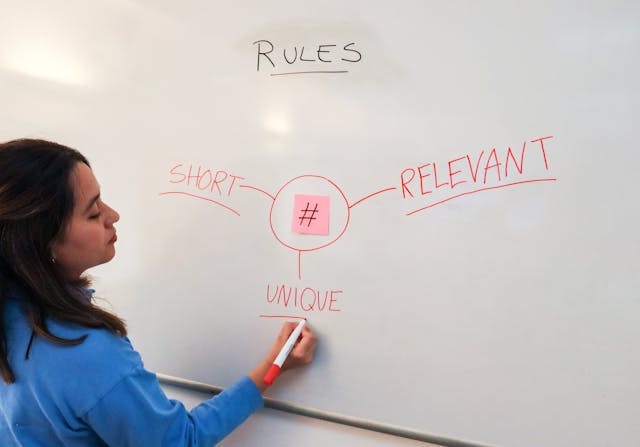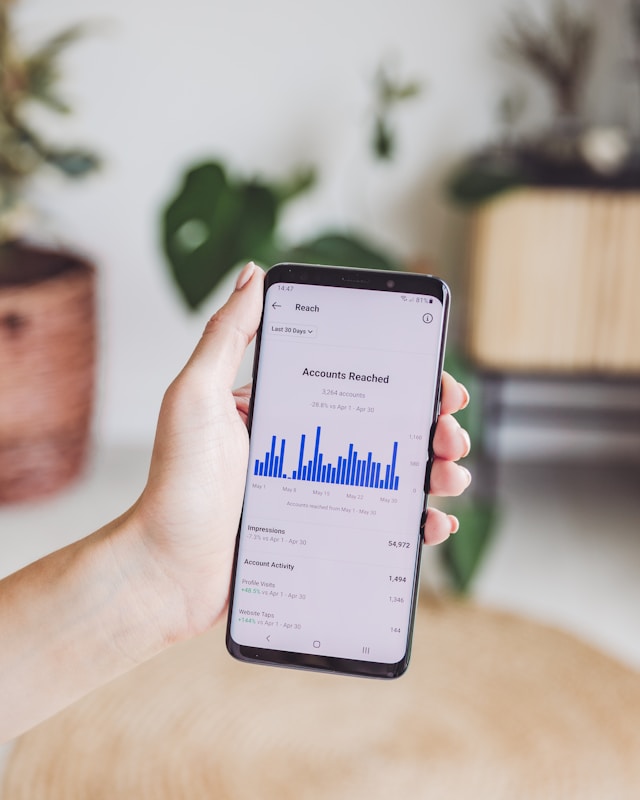Learning how to connect with your followers (and even get new ones) is part of any social media strategy. From TikTok to Instagram, brands need to learn about their online audiences as well as their opinions. This will even help you address common customer problems. In this guide, you’ll learn all about social listening and the many benefits it has for businesses.

What Is Social Listening?
You’ll always want to keep an eye on what people are saying when running a brand account. If you don’t know what your followers are looking for, you might end up losing their business quite quickly. Ultimately, social media listening is about understanding what your leads will want from you and your accounts.
This involves monitoring online feedback, sometimes (but not always) when they tag you. This could be from current buyers or prospective customers still considering their purchase. Social media is great for getting instant feedback from the people who follow your journey. You can also use this as the bedrock for any future business decisions.
However, you shouldn’t restrict this just to your brand. You can also find what people are saying about your competitors. This will show you what they’re missing — and give you the opportunity to fill these gaps. Even listening out for your industry as a whole can offer great clues as to what these people want.
Getting more regular buyers is your main goal as a business owner, both online and offline. You can only do this if you’re constantly delivering value. Your social media channels let you sample your target audience and find their pain points. You could even directly ask them what they want from your upcoming products.

Social Listening vs. Monitoring: What’s the Difference?
There are big differences between social media listening and social media monitoring. Listening is more proactive; this is when you seek out direct and indirect customer feedback. You may use special social listening software to track product mentions in Instagram captions, for example. In contrast, monitoring focuses more on reactivity.
Monitoring involves checking the brand’s notifications for exclusively direct feedback. If you limit yourself to this, you might end up building an echo chamber. Your customer service team may deal with major complaints, but it can’t show you the bigger picture. You must go beyond to get more opinions.
Listening and monitoring are both important parts of any online brand strategy. For example, if a reviewer tags you on Instagram, you should still engage with their content. However, you’ll also benefit from checking reviews for other brands. This gives you solid ideas for future products or overall business directions.
Social monitoring doesn’t highlight every conversation about your company. In fact, people may avoid tagging you deliberately while talking about your products. If they have negative feedback, for example, they may not want you to see it. However, this could be the only way for your brand to grow.
Listening is less about checking for problems and resolving them. Instead, it’s all about a deeper understanding of your current (and future!) audience. On a macro level, this involves looking out for sector-wide trends. If you don’t, it might take you some time to catch up to your competitors.

Building a Social Media Listening Strategy on Instagram
Your unique approach to social media listening will determine your brand’s long-term Instagram success. There’s no one-size-fits-all strategy, but you should still follow certain steps to find your audience’s needs. Here are the main ways you can do this.
1. Choose Your Listening Goals
You and your team might struggle to listen out for everything. Figure out whether your priority is addressing pain points, your brand’s reputation, or improving the relationships you already have. This will let you fine-tune your listening and get more effective metrics.
2. Use Third-Party Tools
There are certain programs and SaaS options that can listen out on your behalf. While IG offers its own Insights tab, you might need something that goes deeper. These tools can identify major conversations happening in your industry, including those about your brand.
3. Engage With Your Audience
According to the 2023 Sprout Social Index Report, 46% of customers prioritize brands that engage with their network. If you want to prove you’re listening, respond to questions and conversations where you can. This demonstrates that your company always has its finger on the pulse.
4. Adapt to Trends
Your brand could live or die based on how well it accommodates changes in the industry. Every marketing campaign you set up should reflect the here and now. This means checking for trends your team might be able to accommodate in their strategies.
5. Monitor Changing Sentiments
Along similar lines, always keep an eye on how opinions are changing. For example, there may be a boycott against one of your suppliers. Your social media listening strategy depends on your ability to respond to crises and see changes on short notice.

How Hashtags Help Social Media Listening
Tracking popular IG hashtags is great for finding out what people want from your industry. You’ll be able to sample your competitors and everything that makes them popular, for example. This can even extend to building up a new long-term social media strategy. Popular posts could show the specific tone your potential customers want from accounts like yours.
However, you shouldn’t just focus on the tags that have the most posts. It’s usually better to look at more specific terms which link to your business more closely. Appealing to a strong niche can give better results than competing in a crowded arena. Beauty Instagrammers might want to see posts relating to specific product types, for example.
Hashtags unlock customer conversations you didn’t even know were happening. If you’d like to check these on Instagram, there are a number of tools that can help. The Explore page similarly uses hashtags (and other factors) to show you posts relevant to your brand. You must also keep an eye out for banned hashtags that offer little engagement.

What Are Social Listening Tools?
The software and tools you use will determine just how successful your listening strategy is. You need to go beyond simply searching for mentions of your company’s name. Social listening tools search for important high-impact keywords across your industry. They also keep an eye on your competitors, offering tangible advice on matching their strategy.
These listening apps don’t limit themselves to the company’s main social media platforms. They analyze blogs, third-party product listings, online forums, and so much more. This is paramount for getting a full picture of your potential audience and how to grow it. Listening tools even show the times these conversations are most likely to happen.
However, it’s entirely possible that these tools will have false positives. While they’re easy to use, for the most part, they don’t run themselves. Your business still needs a human touch to change the data it collects into actionable insights. Refining your keyword searches will usually help you cut down on these issues.
These tools could be a big part of your future marketing strategies. They may even give you and your team new campaign ideas for further down the line. So long as you use them well, you’ll be ahead of the competition in no time. However, you’ll first need to know more about the available software options.
Where To Find Instagram Social Listening Software
Every listening app or tool has its own specialty. You need to find the one that fits your business best. If Instagram is your brand’s biggest platform, for example, your listening tools need to take this into account. But what are social listening tools that can specifically help your Insta brand?
There are several apps to choose from if IG is your main network. We have listed some of the most popular ones below.
- Socialinsider: With a broader focus on analytics, this tool tracks mentions of your brand throughout the app. This can even show the specific sentiments that your audience associates with your company’s products.
- Sprout Social: This is another tool that monitors search volume for certain terms. It also offers a range of engagement tracking features alongside updates on important industry trends that are still in flux. Sprout even identifies specific influencers who work within your sector and may boost your business further.
- Hootsuite: This software generates custom reports on your competitors. Their tool can also monitor your Insta audience and their current social conversation. This means identifying which broad themes and topical subjects will appeal to them.
No matter your app of choice, integrating listening software into your strategy is sure to help.

The Benefits of Social Listening
If you’re going the extra mile to pay attention to your audience, you’ll see plenty of benefits. This approach goes far beyond basic customer service, putting you on the same wavelength as your network. Here are the main advantages of social media listening that your business can enjoy:
- Knowing your audience: Social media listening is all about figuring out what your target audience wants from your brand. No matter the form this takes, this is great feedback for your team to take on board.
- Monitoring the competition: Similarly, you could use this tactic to see what people are saying about your rival brands. Knowing what they’re missing could give you lots of great marketing ideas for the future.
- Tracking challenging situations: If a serious problem develops for your company or industry, listening will help you respond. Monitoring these conversations also helps you get ahead of potential PR disasters.
- Checking collab opportunities: Some SL tools highlight key influencers who might be interested in partnering with you. This includes nano influencers and people who already have good things to say about your products.
- Finding new trends: Your social listening strategy must be constantly evolving to match your sector’s latest fads. You should look for new trends every day — or you’ll easily fall behind the current conversation.
- Targeting a niche: Your goal in any company campaign is to deliver messages straight to your niche. Zeroing in on your target audience is at the heart of any social listening definition.
- Joining conversations: If your SL tools show questions people have about your brand/sector, don’t be afraid to answer them! Engaging with possible customers could be the push they need to buy.
Customer Pain Points and Why They Matter
Knowing your audience’s pain points is critical for successful listening campaigns. In fact, one of the main benefits of social listening is its ability to highlight these for you. Pain points are issues or shortcomings with a service that customers want you to fix. For example, someone might not have enough money to buy an expensive makeup product.
If your brand is in the beauty industry, you can listen out for these concerns. You should then do what you can to address them — even if they aren’t directed towards your products. If you don’t, one of your competitors almost certainly will. To a point, your strategy needs to pivot around the problems slowing down your conversions.
You can’t just listen to people already familiar with your brand and industry. Reaching out to turn leads into new buyers is the only way you’ll keep on succeeding. However, not all of their concerns will be easy to solve. If you can fix them, make sure to highlight these when you’re promoting your next round of products.

Stopping False Positives in Social Media Listening
Not every listening tool or strategy is 100% airtight. Some queries are sure to give a few results that just don’t look right. But what is social listening without the social side? You need to keep an eye on every report and carefully discern if it’s accurate rather than relying on tools.
A false positive could be a pain point that doesn’t relate to your niche. For example, if you run a budget-friendly store, customers likely aren’t directing their price concerns toward you. It might even be someone tagging your company while discussing another similarly-named brand. This can massively throw off your listening metrics.
Even the hashtags you use can flag up unnecessary information. There might be a common tag in your industry with multiple meanings, for example. The tags your tool identifies may similarly be too broad to be useful. Combing over this yourself will help you refine future searches to provide better insights.
Your social listening strategy could help your brand get more followers than ever if you make the right moves. If you need any help getting the recognition you deserve, Goread.io’s organic paid follow services can help.
Our team can boost your profile with genuine non-bot accounts that keep up with your business while it grows. Try out Goread.io today, and you’ll get the growth that matters for your IG company account.
